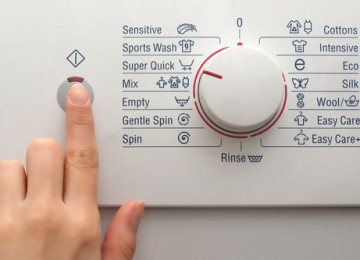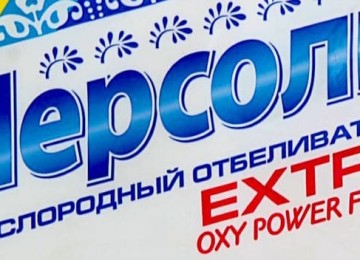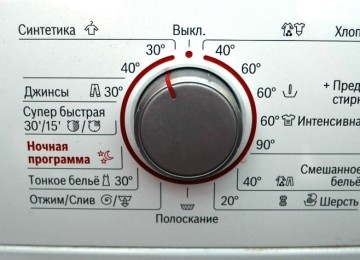 Every day you have to deal with various stains on your clothes: spilled coffee during breakfast, stains on clothes after a walk in rainy weather, a joyful meeting of a beloved pet. To speed up and facilitate the washing process, multifunctional washing machines and many different types of washing powders, bleaches, gel capsules and conditioners were created that help instantly get rid of dirt.
Every day you have to deal with various stains on your clothes: spilled coffee during breakfast, stains on clothes after a walk in rainy weather, a joyful meeting of a beloved pet. To speed up and facilitate the washing process, multifunctional washing machines and many different types of washing powders, bleaches, gel capsules and conditioners were created that help instantly get rid of dirt.
However, the most difficult contaminant that you sometimes have to deal with is blood. It doesn’t matter whether the stain is fresh or already hardened, it still ranks first in sending things to a dacha exile. There are many secrets for removing stubborn stains and removing blood from white clothes.
Fresh stain: what to do?
If the stain is fresh, then removing it should not pose any problems. In such cases, it is recommended to use laundry soap or washing powder. Initially, you can soak the item using bleach.
By hand or washing machine?
To wash clothes by hand, first blot the blood stain with a paper towel. Do not rub, but blot a couple of times to remove excess moisture. When a stain is rubbed, it deepens into the fabric fibers, which creates difficulties for washing. The area of contamination should be rinsed in cold water under low pressure. Then we soap the stain and soak it again in cold water for 50 minutes. Rinse it and your item will be as good as new. If you cannot solve the problem in this way, then you should use bleach or stain remover.
To wash in a washing machine, you need to first soak the stain, rinse it under cold water, and then choose a gentle mode with a temperature of up to 40 degrees Celsius. Can be used additional rinse with conditioner.

Old stain
Remove a long-standing stain at home it will be a little more difficult. You will need several available products: hydrogen peroxide, sodium chloride, dishwashing detergent, glycerin, acetic acid, baking soda and ammonia. So, each of these products is very effective against various greasy stains and stagnant oil stains. It is worth noting that it will be just as effective in removing blood from white clothes when provided that it is used correctly:
- The easiest way is to use dishwashing detergent. Apply a little product to a sponge (or a rag) and rub a little. Leave for 40 minutes. Rinse thoroughly with cool water.
- You can remove a bloody stain at home using regular salt.To do this, mix one tablespoon of table salt with a liter of water. Soak the white item in the resulting solution for at least eight hours. Then rinse or wash in the washing machine.
- Baking soda is an excellent oxidizer, so you can use it to remove blood from white clothes without much effort. You need to mix 500 ml of cold water and a tablespoon of soda, stir. Using a terry cloth, soak the stain with this solution and leave until completely dry. After that, wash the white clothes either by hand or in the washing machine. It is better to rinse several times.
- An effective method is to pour hydrogen peroxide on the stain. The most important thing is that the stain is completely saturated with liquid. Wait 15 to 25 minutes and thoroughly wipe the stain with dry napkins or cotton pads. A small clarification: you need to leave the item in a dark place, since under the influence of sunlight or light, peroxide decomposes and can completely ruin your item.
- The glycerin method is the safest and fastest, but there is one drawback - the smell. After glycerin "bleaching", a bright aroma is guaranteed. To wash blood from white clothes, glycerin must be heated. Apply warm glycerin to the blood stain and rub with a cotton pad until completely removed. Then follow with a thorough wash and double rinse.
- To remove blood from white fabric, a method using ammonia is suitable. Dissolve a tablespoon of alcohol in a liter of water. Soak items in this solution for at least an hour. Wipe the contaminated area with a terry towel, then wash thoroughly. It is advisable to rinse the item until the alcohol smell is completely removed.
- Acetic acid is excellent at removing stubborn stains (such as blood, coffee, red wine). But here you need to be careful. Both with the skin on your hands (that is, you need to wash only with gloves), and with clothes. Things should be made of thick fabric, soaking should be done for no more than half an hour. Then wash the items and rinse thoroughly (preferably by hand).
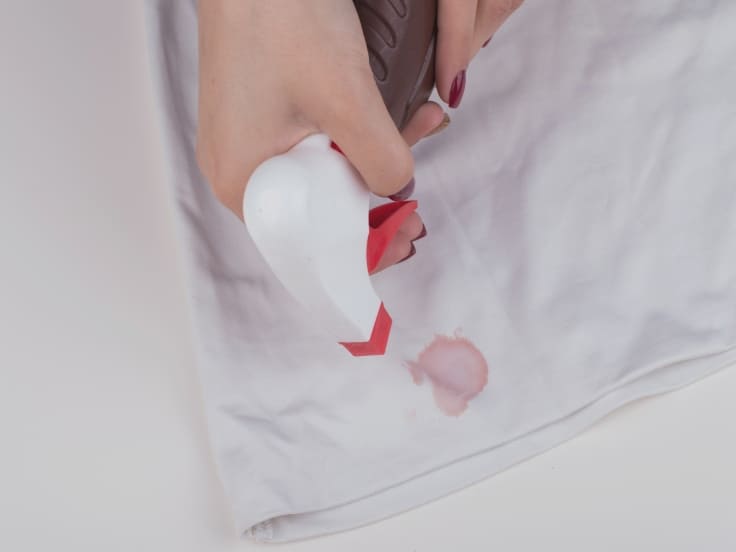
Little secrets of housewives
Products for removing blood from white things have long appeared on the shelves. They will help remove dirt faster, but you need to give priority to products containing ammonia.

It is strictly forbidden to iron things with stains that are difficult to remove (this includes blood). Pollution eats into the deep layers of tissue. After this procedure, you will not be able to remove the stain either at home or in professional dry cleaners.
Many housewives have a little secret for returning white things to ideal condition. After bleaching or several “painful” washes for the fabric (with ammonia, glycine, etc.), you need to rinse the clothes in warm water with a tablespoon of vinegar (preferably apple cider vinegar). The fabric will regain its former shine and silkiness.
It is much better to soak things in boiled water. In most cases, tap liquid is hard and impurities in it interfere with the interaction of the powder with dirt, acting as a “third wheel”.
Features of removing bloody stains from white things
- Do not dry white clothes that have been soiled in direct sunlight.If suddenly the bloody stain is not completely removed, it will become embedded in the fabric, similar to the effect when ironing.
- You need to start removing the stain as quickly as possible. It is very easy for a white item to be damaged by washing. And with harsh washing methods, the chance of the item losing its original appearance is as simple as shelling pears.
- You should always combine several methods for removing dried blood stains. Moreover, stain removal should begin with more gentle means and methods and move on to more aggressive methods.
- Apply all solutions prepared at home, preferably only to the area of contamination; try not to disturb the fabric around it.
- Time yourself! To remove old blood, quite active washing components are used that can make a hole in things. Therefore, the time interval is important here.
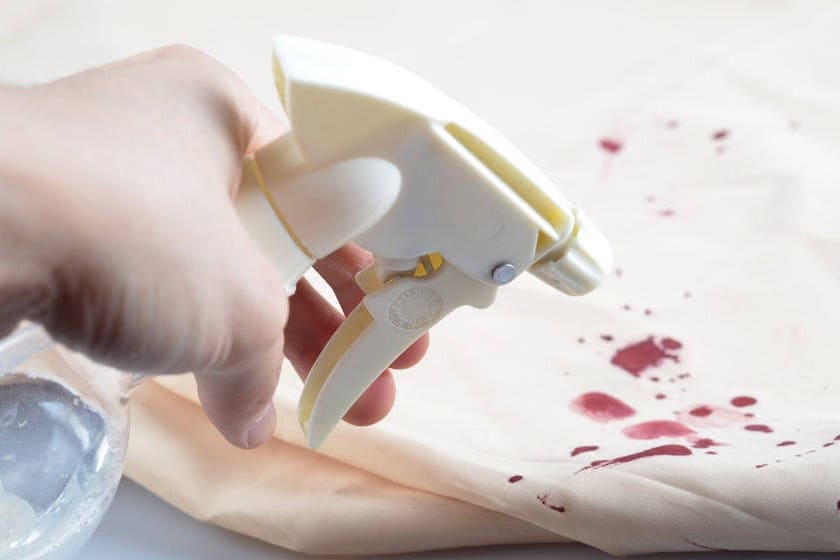
Tissue and protein (blood) stain: varieties
Each tissue has an individual effect of interaction with protein (hemoglobin). The only similarity is that it will “brew up” on anyone. Some types of fabric will remain inconspicuous spot, while others can be wiped off with a damp cloth.
The most common fabric is linen or cotton. Almost all breeding methods are suitable for them. But you need to start with less aggressive ones, because if the stain has not been exposed to direct sunlight, then it should come out without any problems. The most common method of removal is to mix potato starch and water until a thick consistency is obtained. Place the “porridge” on the stain and wait two hours, then rinse.
For dense fabric (most often jackets, coats, jeans), more aggressive methods are used using ammonia or soda, since blood has the ability to penetrate deep into the fabric due to its multi-layered nature and porosity.
Leather is easy here! Once done, use a damp cloth; if it gets stuck, use ammonia.
Separately, you can consider bed linen. Most often it is a mixture of different fabrics of a certain density. The most effective method is pouring hydrogen peroxide, but be prepared for yellow marks even after 5 or 10 washes, since bed linen has the inherent property of absorbing (for example, excess moisture).
Silk and wool. Only delicate methods are suitable here: hand washing without aggressive ingredients using a small amount of bleach or dishwashing detergent.







